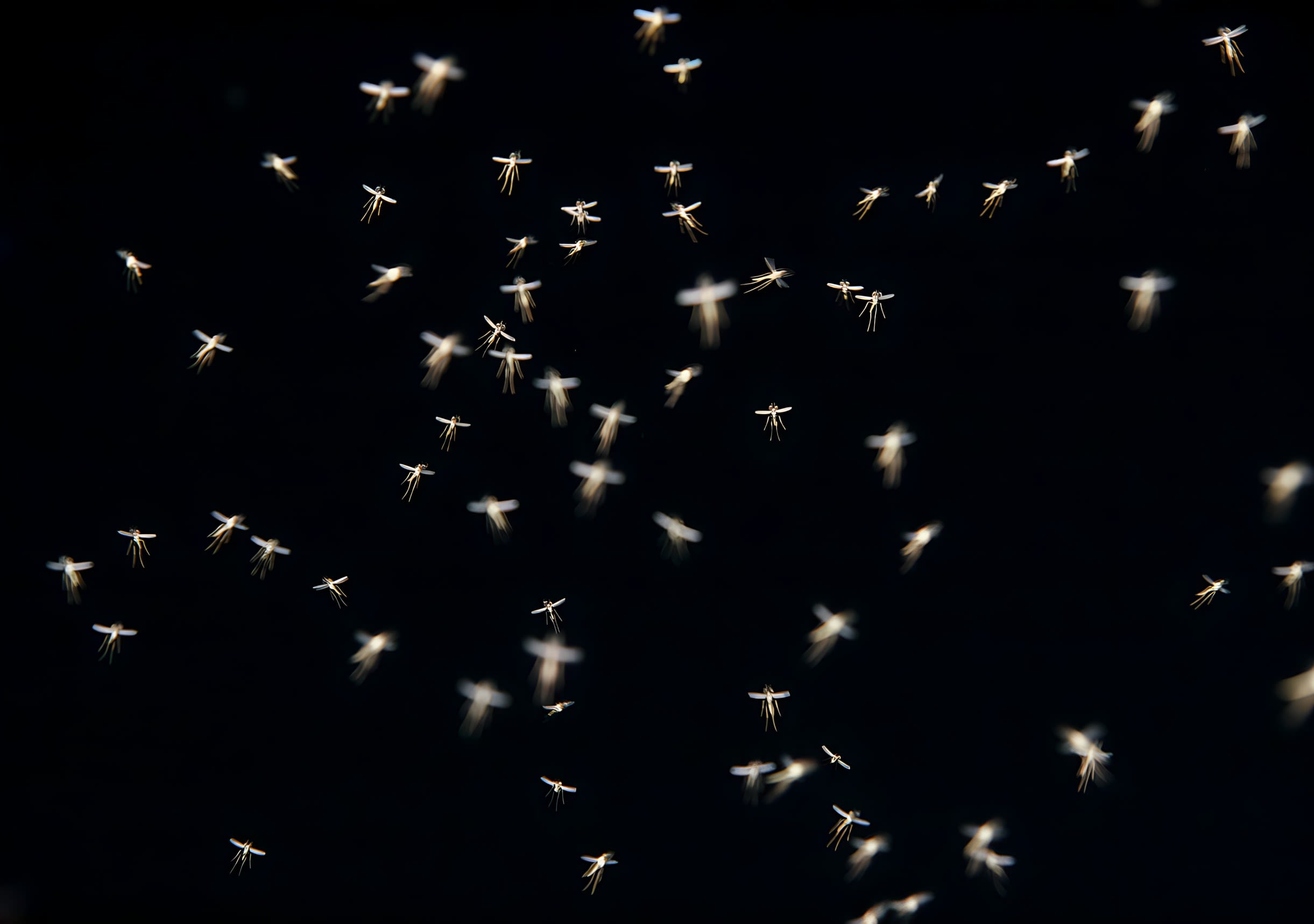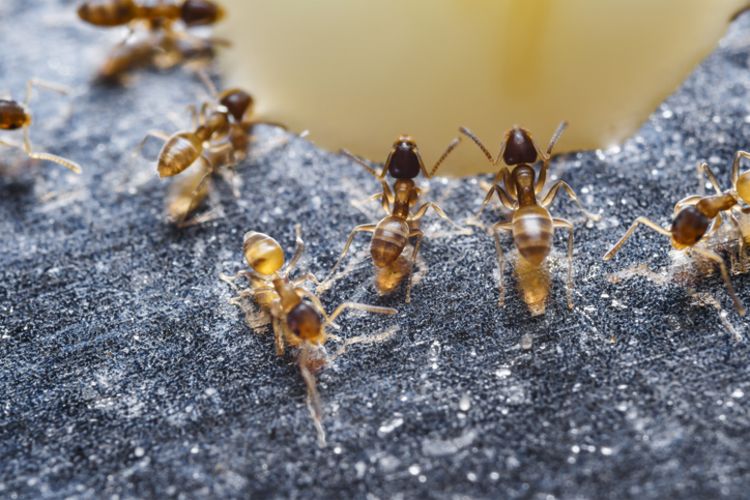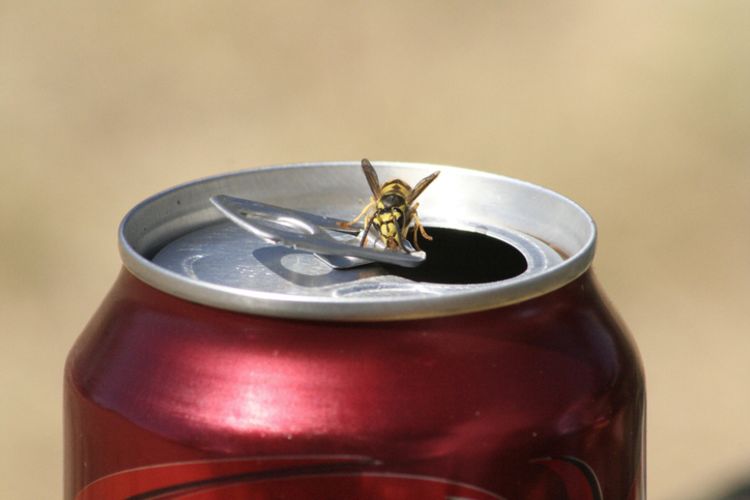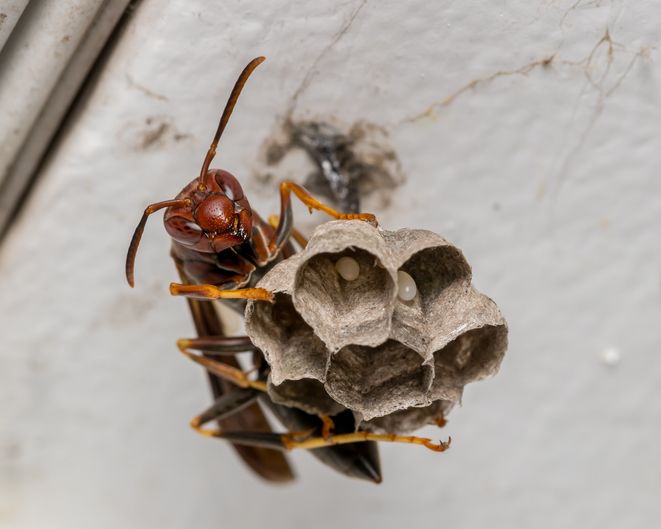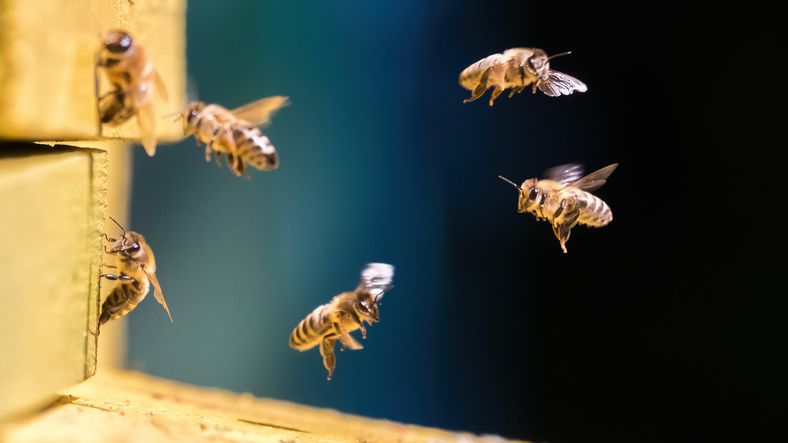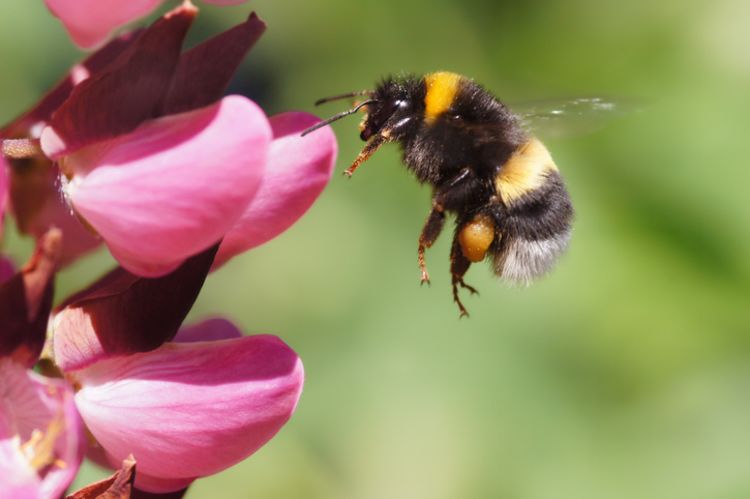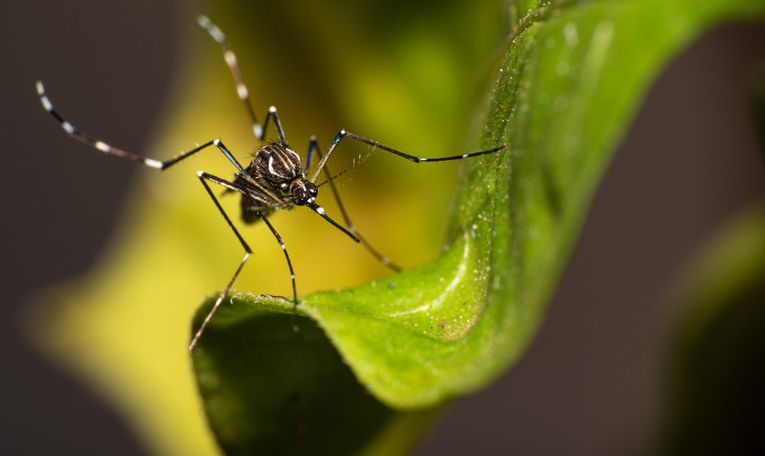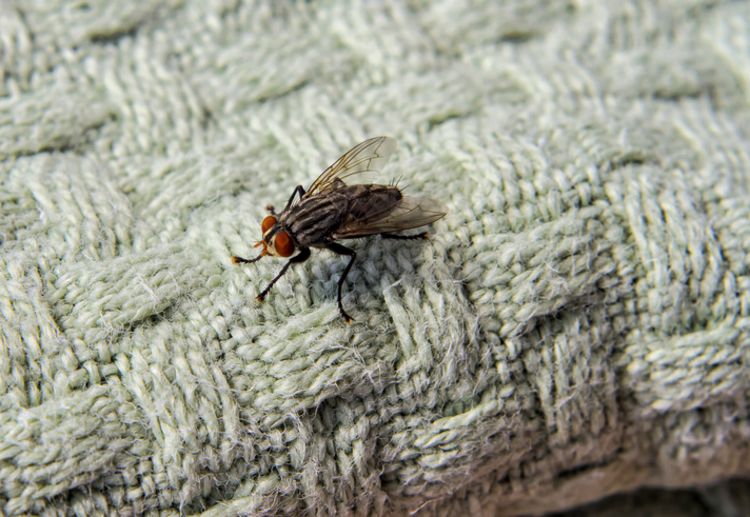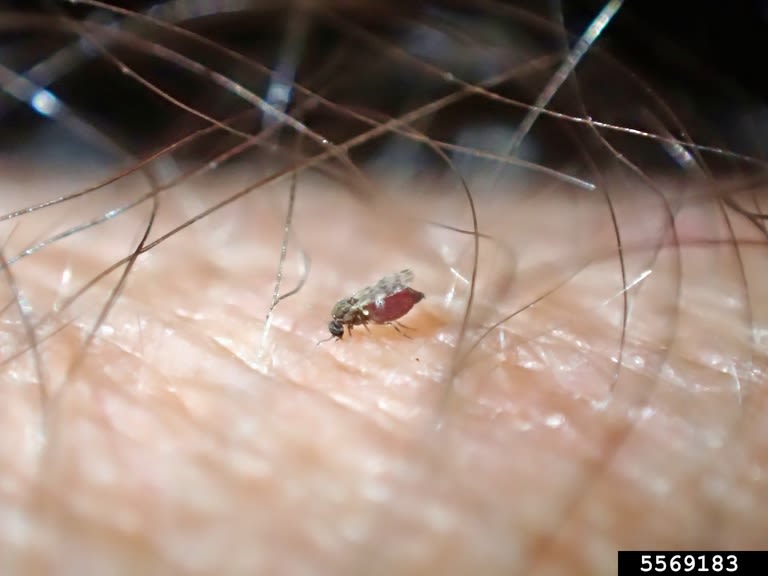Ouch! What just bit me?
UGA entomologist Elmer Gray offers tips on how to identify Georgia’s stinging and biting insects and explains what you can do about them.
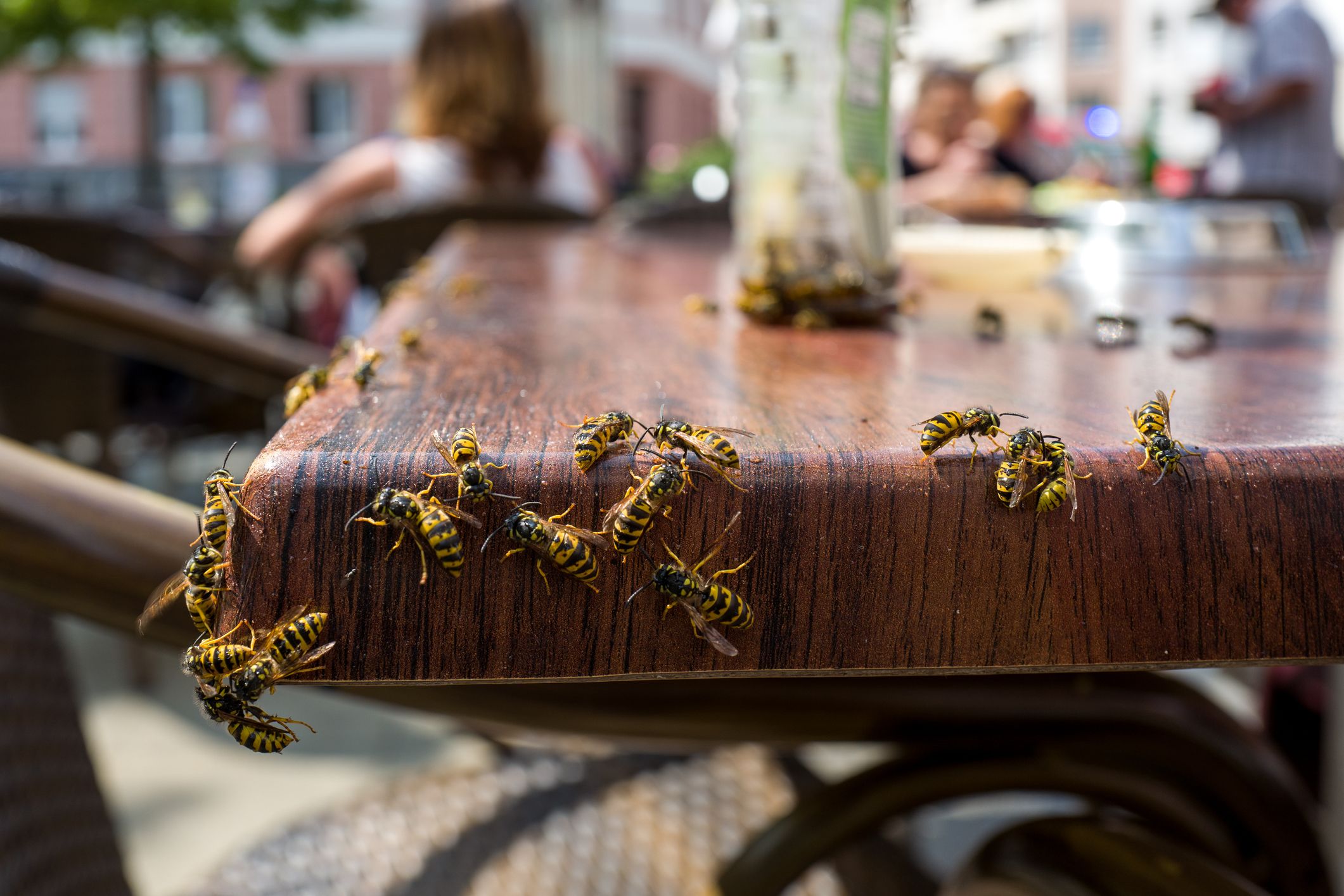
As temperatures warm up and summer approaches, you may be looking forward to spending more time outdoors — camping, gardening, grilling or just simply soaking up the sunshine.
But with warmer weather comes a surge in stinging and biting insects that can quickly turn a fun day outside into an itchy, uncomfortable ordeal. Elmer Gray, a research entomologist with the University of Georgia College of Agricultural and Environmental Sciences and specialist for UGA Cooperative Extension, shares insight into the most common insect pests of the season — and how to protect yourself and your family.
But first, an important note about reactions to stings and bites
When insects bite, they often inject saliva to digest the tissue and aid in the feeding process. Your body’s reaction to the components of the saliva causes the itching, redness and swelling associated with these bites. Some insects inject venom to subdue prey or protect themselves or their nests. Bees and wasps that live in colonies can attack in large numbers, potentially exposing victims to dangerous amounts of venom.
Most stinging events are a surprise. If stung, quickly get away from the area where the sting occurred and remove the stinger with a credit card or fingernail if it’s visible at the sting site. People usually experience pain, swelling and stiffness from a single sting. While the discomfort typically lasts an hour to a day or two, some people can develop severe reactions that require professional medical treatment.
If you have been stung, immediately remove any jewelry. If possible, find a shaded area to sit, hydrate and assess your condition. Physical pain and elevated emotions are typical following a sting, but try to remain calm, as most stings do not require medical attention. Seek medical attention if you develop swelling over the body, constricted breathing, nausea or joint pain. People who develop severe symptoms from a single sting should see their physician and consider carrying an allergy first-aid kit while outdoors.
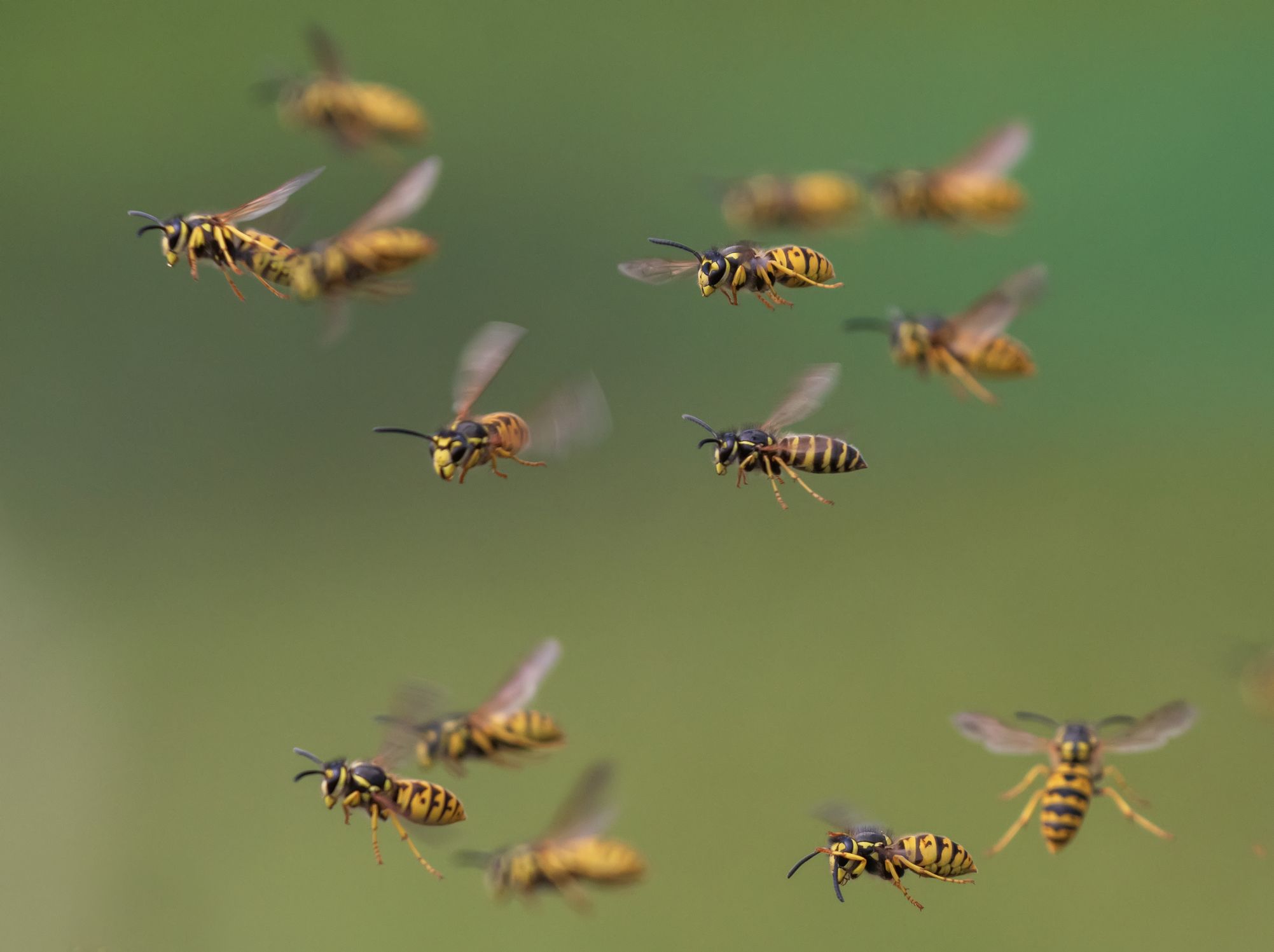
Stinging insects
Fire ants
Fire ants, bees and wasps are all closely related and sting by injecting venom from the tip of their abdomen. Fire ants, the most common and troublesome ant in the Southeastern U.S., build characteristic mounds that can be problematic for farmers, lawn care professionals and residents alike. When the mound is disturbed, the fire ants respond aggressively and will induce multiple stings. Young children can be particularly susceptible to numerous stings if left unattended in infested areas. Each sting produces a swollen, red area with a blister that heals slowly. The fire ant sting is typically less painful than wasp and bee stings.
Yellow jackets
Yellow jackets, identified by their black and yellow banding, are a common nuisance in late summer. Colonies of these small wasps are initiated by overwintering queens that make paper nests underground and in hollow trees, wall voids and attics. A fully developed nest may contain a few hundred to thousands of adults. Yellow jackets feed on insect pests but are also attracted to food and soft drinks at picnics, camps and garbage sites. Solitary scavenging yellow jackets are usually nonaggressive unless provoked, but yellow jackets become very aggressive as a group if their nest is disturbed. Late summer activities like mowing and brush clearing around property edges can often disturb nests. When a large nest is disturbed, multiple yellow jackets may attach to the intruder’s clothing, creating the impression of being chased. The event isn’t over until all yellow jackets on your clothing are removed.
Umbrella wasps (paper wasps)
These dusky brown wasps with orange markings construct open paper nests suspended from short stalks resembling umbrellas. Nests are typically built under the eaves of houses, on porches, in attics or amid dense shrubbery. A fertilized overwintering queen makes a new nest each year. These wasps feed on caterpillars and each nest contains up to about 250 wasps. Paper wasps are typically encountered when someone disturbs an unknown nest. If wasps start swarming you, immediately move away from the area and determine their origin. Disturbed wasps will typically stay near their nest. Left undisturbed, these wasps are not typically a problem, however they often establish nests in areas close to our routine activities, increasing the likelihood of negative encounters.
Honey bees
Honey bees were brought to the U.S. from Europe many years ago. Most colonies are managed in manmade hives but escaped swarms sometimes nest in hollow trees, wall voids and attics. Honeybee colonies last several years, with the queen and workers overwintering in the hive. People usually get stung while walking barefoot across a lawn with blooming clover or dandelions or if a bee gets trapped between clothing and skin. Aside from beekeepers, honeybees typically don’t cause too much trouble.
Baldfaced hornets
Baldfaced hornets are a type of yellow jacket that builds nests suspended in trees and bushes. The nest looks like a bloated football high off the ground in a tree or bush, usually with a single entrance opening at the lower end of the nest. Left undisturbed, these nests don’t cause much of a problem and are an interesting conversation piece when collected after a hard frost.
Bumble bees
Bumble bees are big, buzzing, furry, yellow-and-black bees that produce an excruciating sting. Thankfully, they are very docile unless their nest is disturbed. Unlike carpenter bees, bumble bees have a yellow pubescence on their abdomen. Only fertilized females hibernate during the winter and start new nests in the spring, usually in cavities in the soil previously used by field mice.
Fire ants (genus Solenopsis) comprise nearly 200 species of ants native to tropical regions, including Central and South America. Introduced to the United States in the early 1900s, fire ants have since spread extensively throughout the Southern U.S.
Fire ants (genus Solenopsis) comprise nearly 200 species of ants native to tropical regions, including Central and South America. Introduced to the United States in the early 1900s, fire ants have since spread extensively throughout the Southern U.S.
Fire ants (genus Solenopsis) comprise nearly 200 species of ants native to tropical regions, including Central and South America. Introduced to the United States in the early 1900s, fire ants have since spread extensively throughout the Southern U.S.
Fire ants (genus Solenopsis) comprise nearly 200 species of ants native to tropical regions, including Central and South America. Introduced to the United States in the early 1900s, fire ants have since spread extensively throughout the Southern U.S.
Fire ants (genus Solenopsis) comprise nearly 200 species of ants native to tropical regions, including Central and South America. Introduced to the United States in the early 1900s, fire ants have since spread extensively throughout the Southern U.S.
Fire ants (genus Solenopsis) comprise nearly 200 species of ants native to tropical regions, including Central and South America. Introduced to the United States in the early 1900s, fire ants have since spread extensively throughout the Southern U.S.
Fire ants (genus Solenopsis) comprise nearly 200 species of ants native to tropical regions, including Central and South America. Introduced to the United States in the early 1900s, fire ants have since spread extensively throughout the Southern U.S.
Fire ants (genus Solenopsis) comprise nearly 200 species of ants native to tropical regions, including Central and South America. Introduced to the United States in the early 1900s, fire ants have since spread extensively throughout the Southern U.S.
Yellow jackets are very active in late summer and fall and are often encountered scavenging for sugary foods and drinks at picnics, campsites, and around hummingbird feeders. Before eating or drinking outdoors, it’s wise to check for yellow jackets to avoid a painful sting.
Yellow jackets are very active in late summer and fall and are often encountered scavenging for sugary foods and drinks at picnics, campsites, and around hummingbird feeders. Before eating or drinking outdoors, it’s wise to check for yellow jackets to avoid a painful sting.
Yellow jackets are very active in late summer and fall and are often encountered scavenging for sugary foods and drinks at picnics, campsites, and around hummingbird feeders. Before eating or drinking outdoors, it’s wise to check for yellow jackets to avoid a painful sting.
Yellow jackets are very active in late summer and fall and are often encountered scavenging for sugary foods and drinks at picnics, campsites, and around hummingbird feeders. Before eating or drinking outdoors, it’s wise to check for yellow jackets to avoid a painful sting.
Yellow jackets are very active in late summer and fall and are often encountered scavenging for sugary foods and drinks at picnics, campsites, and around hummingbird feeders. Before eating or drinking outdoors, it’s wise to check for yellow jackets to avoid a painful sting.
Yellow jackets are very active in late summer and fall and are often encountered scavenging for sugary foods and drinks at picnics, campsites, and around hummingbird feeders. Before eating or drinking outdoors, it’s wise to check for yellow jackets to avoid a painful sting.
Yellow jackets are very active in late summer and fall and are often encountered scavenging for sugary foods and drinks at picnics, campsites, and around hummingbird feeders. Before eating or drinking outdoors, it’s wise to check for yellow jackets to avoid a painful sting.
Yellow jackets are very active in late summer and fall and are often encountered scavenging for sugary foods and drinks at picnics, campsites, and around hummingbird feeders. Before eating or drinking outdoors, it’s wise to check for yellow jackets to avoid a painful sting.
Yellow jackets are very active in late summer and fall and are often encountered scavenging for sugary foods and drinks at picnics, campsites, and around hummingbird feeders. Before eating or drinking outdoors, it’s wise to check for yellow jackets to avoid a painful sting.
Yellow jackets are very active in late summer and fall and are often encountered scavenging for sugary foods and drinks at picnics, campsites, and around hummingbird feeders. Before eating or drinking outdoors, it’s wise to check for yellow jackets to avoid a painful sting.
Yellow jackets are very active in late summer and fall and are often encountered scavenging for sugary foods and drinks at picnics, campsites, and around hummingbird feeders. Before eating or drinking outdoors, it’s wise to check for yellow jackets to avoid a painful sting.
Yellow jackets are very active in late summer and fall and are often encountered scavenging for sugary foods and drinks at picnics, campsites, and around hummingbird feeders. Before eating or drinking outdoors, it’s wise to check for yellow jackets to avoid a painful sting.
Yellow jackets are very active in late summer and fall and are often encountered scavenging for sugary foods and drinks at picnics, campsites, and around hummingbird feeders. Before eating or drinking outdoors, it’s wise to check for yellow jackets to avoid a painful sting.
Yellow jackets are very active in late summer and fall and are often encountered scavenging for sugary foods and drinks at picnics, campsites, and around hummingbird feeders. Before eating or drinking outdoors, it’s wise to check for yellow jackets to avoid a painful sting.
Paper wasp nests feature open combs with down-pointing cells and are sometimes called umbrella wasps due to their distinctive design. Unlike the more aggressive yellow jackets and hornets, paper wasps typically only attack when they or their nest are threatened.
Paper wasp nests feature open combs with down-pointing cells and are sometimes called umbrella wasps due to their distinctive design. Unlike the more aggressive yellow jackets and hornets, paper wasps typically only attack when they or their nest are threatened.
Paper wasp nests feature open combs with down-pointing cells and are sometimes called umbrella wasps due to their distinctive design. Unlike the more aggressive yellow jackets and hornets, paper wasps typically only attack when they or their nest are threatened.
Paper wasp nests feature open combs with down-pointing cells and are sometimes called umbrella wasps due to their distinctive design. Unlike the more aggressive yellow jackets and hornets, paper wasps typically only attack when they or their nest are threatened.
Paper wasp nests feature open combs with down-pointing cells and are sometimes called umbrella wasps due to their distinctive design. Unlike the more aggressive yellow jackets and hornets, paper wasps typically only attack when they or their nest are threatened.
Paper wasp nests feature open combs with down-pointing cells and are sometimes called umbrella wasps due to their distinctive design. Unlike the more aggressive yellow jackets and hornets, paper wasps typically only attack when they or their nest are threatened.
Paper wasp nests feature open combs with down-pointing cells and are sometimes called umbrella wasps due to their distinctive design. Unlike the more aggressive yellow jackets and hornets, paper wasps typically only attack when they or their nest are threatened.
Paper wasp nests feature open combs with down-pointing cells and are sometimes called umbrella wasps due to their distinctive design. Unlike the more aggressive yellow jackets and hornets, paper wasps typically only attack when they or their nest are threatened.
Paper wasp nests feature open combs with down-pointing cells and are sometimes called umbrella wasps due to their distinctive design. Unlike the more aggressive yellow jackets and hornets, paper wasps typically only attack when they or their nest are threatened.
Paper wasp nests feature open combs with down-pointing cells and are sometimes called umbrella wasps due to their distinctive design. Unlike the more aggressive yellow jackets and hornets, paper wasps typically only attack when they or their nest are threatened.
Paper wasp nests feature open combs with down-pointing cells and are sometimes called umbrella wasps due to their distinctive design. Unlike the more aggressive yellow jackets and hornets, paper wasps typically only attack when they or their nest are threatened.
Paper wasp nests feature open combs with down-pointing cells and are sometimes called umbrella wasps due to their distinctive design. Unlike the more aggressive yellow jackets and hornets, paper wasps typically only attack when they or their nest are threatened.
When a honey bee stings, the stinger and venom sac can remain embedded in the skin. Scrape the stinger with your fingernail, a credit card or a hive tool. Never pull it out, as this can squeeze more venom into the skin.
When a honey bee stings, the stinger and venom sac can remain embedded in the skin. Scrape the stinger with your fingernail, a credit card or a hive tool. Never pull it out, as this can squeeze more venom into the skin.
When a honey bee stings, the stinger and venom sac can remain embedded in the skin. Scrape the stinger with your fingernail, a credit card or a hive tool. Never pull it out, as this can squeeze more venom into the skin.
When a honey bee stings, the stinger and venom sac can remain embedded in the skin. Scrape the stinger with your fingernail, a credit card or a hive tool. Never pull it out, as this can squeeze more venom into the skin.
When a honey bee stings, the stinger and venom sac can remain embedded in the skin. Scrape the stinger with your fingernail, a credit card or a hive tool. Never pull it out, as this can squeeze more venom into the skin.
When a honey bee stings, the stinger and venom sac can remain embedded in the skin. Scrape the stinger with your fingernail, a credit card or a hive tool. Never pull it out, as this can squeeze more venom into the skin.
When a honey bee stings, the stinger and venom sac can remain embedded in the skin. Scrape the stinger with your fingernail, a credit card or a hive tool. Never pull it out, as this can squeeze more venom into the skin.
When a honey bee stings, the stinger and venom sac can remain embedded in the skin. Scrape the stinger with your fingernail, a credit card or a hive tool. Never pull it out, as this can squeeze more venom into the skin.
When a honey bee stings, the stinger and venom sac can remain embedded in the skin. Scrape the stinger with your fingernail, a credit card or a hive tool. Never pull it out, as this can squeeze more venom into the skin.
When a honey bee stings, the stinger and venom sac can remain embedded in the skin. Scrape the stinger with your fingernail, a credit card or a hive tool. Never pull it out, as this can squeeze more venom into the skin.
Bald-faced hornets build nests in trees, under eaves and other outdoor structures. Finished nests are about the size of a football or basketball. They forage in trash, outdoor food and drinks, and ripe fruit in gardens, farms and vineyards. In autumn, cooler temperatures and less food availability drive them to seek warm shelter, making home invasions more likely.
Bald-faced hornets build nests in trees, under eaves and other outdoor structures. Finished nests are about the size of a football or basketball. They forage in trash, outdoor food and drinks, and ripe fruit in gardens, farms and vineyards. In autumn, cooler temperatures and less food availability drive them to seek warm shelter, making home invasions more likely.
Bald-faced hornets build nests in trees, under eaves and other outdoor structures. Finished nests are about the size of a football or basketball. They forage in trash, outdoor food and drinks, and ripe fruit in gardens, farms and vineyards. In autumn, cooler temperatures and less food availability drive them to seek warm shelter, making home invasions more likely.
Bald-faced hornets build nests in trees, under eaves and other outdoor structures. Finished nests are about the size of a football or basketball. They forage in trash, outdoor food and drinks, and ripe fruit in gardens, farms and vineyards. In autumn, cooler temperatures and less food availability drive them to seek warm shelter, making home invasions more likely.
Bald-faced hornets build nests in trees, under eaves and other outdoor structures. Finished nests are about the size of a football or basketball. They forage in trash, outdoor food and drinks, and ripe fruit in gardens, farms and vineyards. In autumn, cooler temperatures and less food availability drive them to seek warm shelter, making home invasions more likely.
Bald-faced hornets build nests in trees, under eaves and other outdoor structures. Finished nests are about the size of a football or basketball. They forage in trash, outdoor food and drinks, and ripe fruit in gardens, farms and vineyards. In autumn, cooler temperatures and less food availability drive them to seek warm shelter, making home invasions more likely.
Bald-faced hornets build nests in trees, under eaves and other outdoor structures. Finished nests are about the size of a football or basketball. They forage in trash, outdoor food and drinks, and ripe fruit in gardens, farms and vineyards. In autumn, cooler temperatures and less food availability drive them to seek warm shelter, making home invasions more likely.
Bald-faced hornets build nests in trees, under eaves and other outdoor structures. Finished nests are about the size of a football or basketball. They forage in trash, outdoor food and drinks, and ripe fruit in gardens, farms and vineyards. In autumn, cooler temperatures and less food availability drive them to seek warm shelter, making home invasions more likely.
Bald-faced hornets build nests in trees, under eaves and other outdoor structures. Finished nests are about the size of a football or basketball. They forage in trash, outdoor food and drinks, and ripe fruit in gardens, farms and vineyards. In autumn, cooler temperatures and less food availability drive them to seek warm shelter, making home invasions more likely.
Bald-faced hornets build nests in trees, under eaves and other outdoor structures. Finished nests are about the size of a football or basketball. They forage in trash, outdoor food and drinks, and ripe fruit in gardens, farms and vineyards. In autumn, cooler temperatures and less food availability drive them to seek warm shelter, making home invasions more likely.
Bumble bees are important pollinators and are more focused on foraging, especially late in the summer, to prepare for their next brood rather than stinging. However, unlike honey bees, bumble bees can sting multiple times if they feel threatened or provoked.
Bumble bees are important pollinators and are more focused on foraging, especially late in the summer, to prepare for their next brood rather than stinging. However, unlike honey bees, bumble bees can sting multiple times if they feel threatened or provoked.
Bumble bees are important pollinators and are more focused on foraging, especially late in the summer, to prepare for their next brood rather than stinging. However, unlike honey bees, bumble bees can sting multiple times if they feel threatened or provoked.
Bumble bees are important pollinators and are more focused on foraging, especially late in the summer, to prepare for their next brood rather than stinging. However, unlike honey bees, bumble bees can sting multiple times if they feel threatened or provoked.
How to control stinging insects
Most social bees, wasps and hornets are beneficial and should not be controlled unless their nest and activities are close to humans and create a hazard. Left undisturbed, these stinging insects will usually do more good than bad. For bees, wasps and hornets nesting in sites that cannot be tolerated, apply an insecticide in the evening when the insects are at rest. With the wind at your back and an escape route selected, aim the insecticide at nest openings. Re-treatment may be necessary. If possible, destroy the nest or seal the nest opening after insecticide application.
Readily available insecticides include aerosols for quick knockdown and kill. Some aerosols produce a jet stream of up to 20 feet for operator safety and the ability to reach nests high off the ground. Colony removal services for honey bees nesting in buildings are available for a fee. Contact your local UGA Extension agent for more information.
Fire ant mounds can be treated relatively easily when they are freshly built after rains. Several commonly available insecticides can be used as an insecticidal drench. Following the label instructions, pour a solution of insecticide over the mound so that the mixture will break the surface; do not stir the mound. Use 1 to 2 gallons for an average 12- to 14-inch diameter mound. Granular and bait formulations are also available and highly effective.
For more detailed chemical control recommendations, refer to the Home and Garden edition of the Georgia Pest Management Handbook.
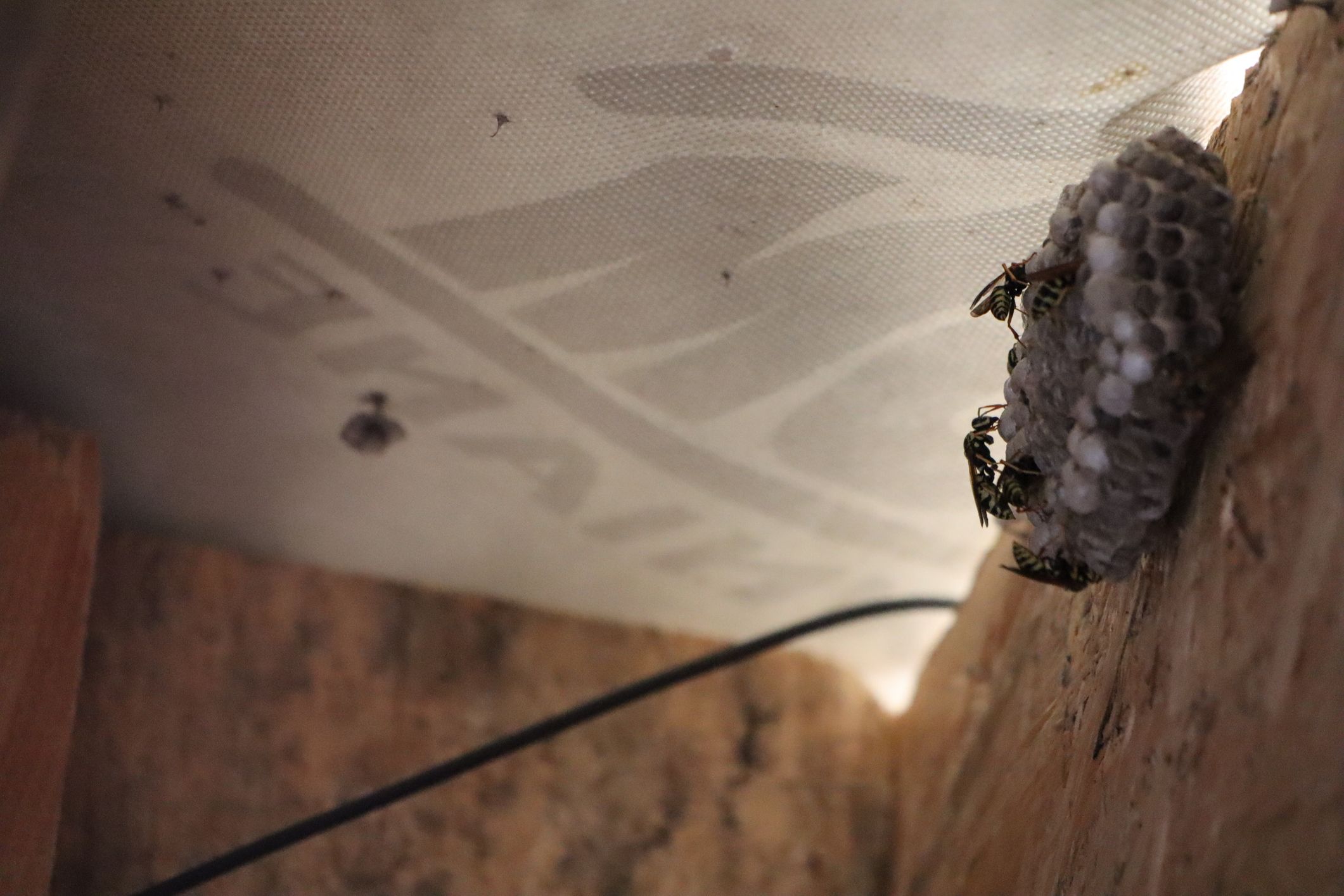
In most parts of the U.S., mosquitoes develop during the spring, summer and fall. In warm, Southern locations, they may develop throughout the year. Water is necessary for mosquito development, so the most effective control method is to frequently dispose of any collected water around the residence or landscape.
In most parts of the U.S., mosquitoes develop during the spring, summer and fall. In warm, Southern locations, they may develop throughout the year. Water is necessary for mosquito development, so the most effective control method is to frequently dispose of any collected water around the residence or landscape.
In most parts of the U.S., mosquitoes develop during the spring, summer and fall. In warm, Southern locations, they may develop throughout the year. Water is necessary for mosquito development, so the most effective control method is to frequently dispose of any collected water around the residence or landscape.
In most parts of the U.S., mosquitoes develop during the spring, summer and fall. In warm, Southern locations, they may develop throughout the year. Water is necessary for mosquito development, so the most effective control method is to frequently dispose of any collected water around the residence or landscape.
In most parts of the U.S., mosquitoes develop during the spring, summer and fall. In warm, Southern locations, they may develop throughout the year. Water is necessary for mosquito development, so the most effective control method is to frequently dispose of any collected water around the residence or landscape.
In most parts of the U.S., mosquitoes develop during the spring, summer and fall. In warm, Southern locations, they may develop throughout the year. Water is necessary for mosquito development, so the most effective control method is to frequently dispose of any collected water around the residence or landscape.
In most parts of the U.S., mosquitoes develop during the spring, summer and fall. In warm, Southern locations, they may develop throughout the year. Water is necessary for mosquito development, so the most effective control method is to frequently dispose of any collected water around the residence or landscape.
In most parts of the U.S., mosquitoes develop during the spring, summer and fall. In warm, Southern locations, they may develop throughout the year. Water is necessary for mosquito development, so the most effective control method is to frequently dispose of any collected water around the residence or landscape.
Deer and horse flies, belonging to the Tabanidae family, are notorious for their painful bites, which are inflicted by the females while the males primarily feed on pollen and nectar. These pests are most active in summer and early fall.
Deer and horse flies, belonging to the Tabanidae family, are notorious for their painful bites, which are inflicted by the females while the males primarily feed on pollen and nectar. These pests are most active in summer and early fall.
Deer and horse flies, belonging to the Tabanidae family, are notorious for their painful bites, which are inflicted by the females while the males primarily feed on pollen and nectar. These pests are most active in summer and early fall.
Deer and horse flies, belonging to the Tabanidae family, are notorious for their painful bites, which are inflicted by the females while the males primarily feed on pollen and nectar. These pests are most active in summer and early fall.
Deer and horse flies, belonging to the Tabanidae family, are notorious for their painful bites, which are inflicted by the females while the males primarily feed on pollen and nectar. These pests are most active in summer and early fall.
Deer and horse flies, belonging to the Tabanidae family, are notorious for their painful bites, which are inflicted by the females while the males primarily feed on pollen and nectar. These pests are most active in summer and early fall.
Deer and horse flies, belonging to the Tabanidae family, are notorious for their painful bites, which are inflicted by the females while the males primarily feed on pollen and nectar. These pests are most active in summer and early fall.
Deer and horse flies, belonging to the Tabanidae family, are notorious for their painful bites, which are inflicted by the females while the males primarily feed on pollen and nectar. These pests are most active in summer and early fall.
Deer and horse flies, belonging to the Tabanidae family, are notorious for their painful bites, which are inflicted by the females while the males primarily feed on pollen and nectar. These pests are most active in summer and early fall.
Deer and horse flies, belonging to the Tabanidae family, are notorious for their painful bites, which are inflicted by the females while the males primarily feed on pollen and nectar. These pests are most active in summer and early fall.
Deer and horse flies, belonging to the Tabanidae family, are notorious for their painful bites, which are inflicted by the females while the males primarily feed on pollen and nectar. These pests are most active in summer and early fall.
Deer and horse flies, belonging to the Tabanidae family, are notorious for their painful bites, which are inflicted by the females while the males primarily feed on pollen and nectar. These pests are most active in summer and early fall.
Homeowners can install fine mesh screens on windows and patios to prevent no-see-ums from entering indoor and outdoor spaces. Since most biting midges can pass through standard 16-mesh screens, using smaller mesh sizes is necessary, though this can reduce airflow. Additionally, ceiling and window fans running at high speeds can help keep these weak fliers out of small areas.
Homeowners can install fine mesh screens on windows and patios to prevent no-see-ums from entering indoor and outdoor spaces. Since most biting midges can pass through standard 16-mesh screens, using smaller mesh sizes is necessary, though this can reduce airflow. Additionally, ceiling and window fans running at high speeds can help keep these weak fliers out of small areas.
Homeowners can install fine mesh screens on windows and patios to prevent no-see-ums from entering indoor and outdoor spaces. Since most biting midges can pass through standard 16-mesh screens, using smaller mesh sizes is necessary, though this can reduce airflow. Additionally, ceiling and window fans running at high speeds can help keep these weak fliers out of small areas.
Homeowners can install fine mesh screens on windows and patios to prevent no-see-ums from entering indoor and outdoor spaces. Since most biting midges can pass through standard 16-mesh screens, using smaller mesh sizes is necessary, though this can reduce airflow. Additionally, ceiling and window fans running at high speeds can help keep these weak fliers out of small areas.
Biting insects
Mosquitoes
Mosquitoes are our most common and widespread biting pest. Mosquito larvae and pupae must have standing water for their development. By eliminating this habitat, we can suppress nuisance populations around our homes and neighborhoods. In coastal and rural areas, floodwater mosquitoes are a common nuisance and can widely transmit disease. Organized control programs often require the use of U.S. Environmental Protection Agency (EPA)-approved larvicides and adulticides to suppress wide-scale populations. Loose-fitting, light-colored clothing and full concentrations of EPA-approved repellents are our best protections.
Deer and horse flies
Deer and horse flies are strong fliers and a serious nuisance to warm-blooded animals and people. Only females require a blood meal, cutting through the skin with bladelike mouthparts. The larvae develop in wet or damp sites high in organic material. Horse flies are larger than deer flies and usually have transparent wings, while deer flies have dark markings on the wings. Control options are limited to larger structural traps. Again, loose-fitting, light-colored clothing and full concentrations of EPA-approved repellents are our best options for avoiding bites.
Biting midges (no-see-ums)
These tiny flies have bladelike mouthparts that cause painful bites. Welts and lesions from the bite may last for days. They develop in damp or wet places high in organic matter and are often attracted to lights. These pests are more common than people realize, causing unknown itching and scratching. As with the other biting insects, wearing loose-fitting, light-colored clothing and using EPA-approved repellents are helpful in preventing bites.
How to control biting insects
Eliminating standing water around our homes will go a long way to minimizing some mosquito populations. However, because of widespread larval habitats and the long flight range of some mosquitoes and most flies and midges, control by homeowners is not always practical. Aerosols can be used indoors for occasional invaders. Barrier insecticide applications applied to the vegetation around yards, patios and pools where these biting pests rest can effectively suppress pest populations. Avoid spraying near flowering vegetation where pollinators are commonly found.
Repellents should be used when outdoors as needed. Various formulations containing DEET can be applied to the skin for several hours of protection. The Centers for Disease Control has also approved Picaridin, oil of lemon eucalyptus and IR3535 as effective alternatives to DEET. For additional protection against mosquitoes that bite through clothing, Permanone – a brand name of an aerosol containing permethrin – which is sprayed on clothing to repel and kill ticks, is also effective against flying insect pests for a day or more. Loose-fitting and light-colored pants and long-sleeved shirts also reduce one’s attractiveness to most biting flies.
Electromagnetic and ultrasonic devices are sometimes advertised as controlling these pests, however no scientific studies substantiate these claims. Natural predators like bats and purple martins eat impressive numbers of various pests but have also not been shown to control pest populations.
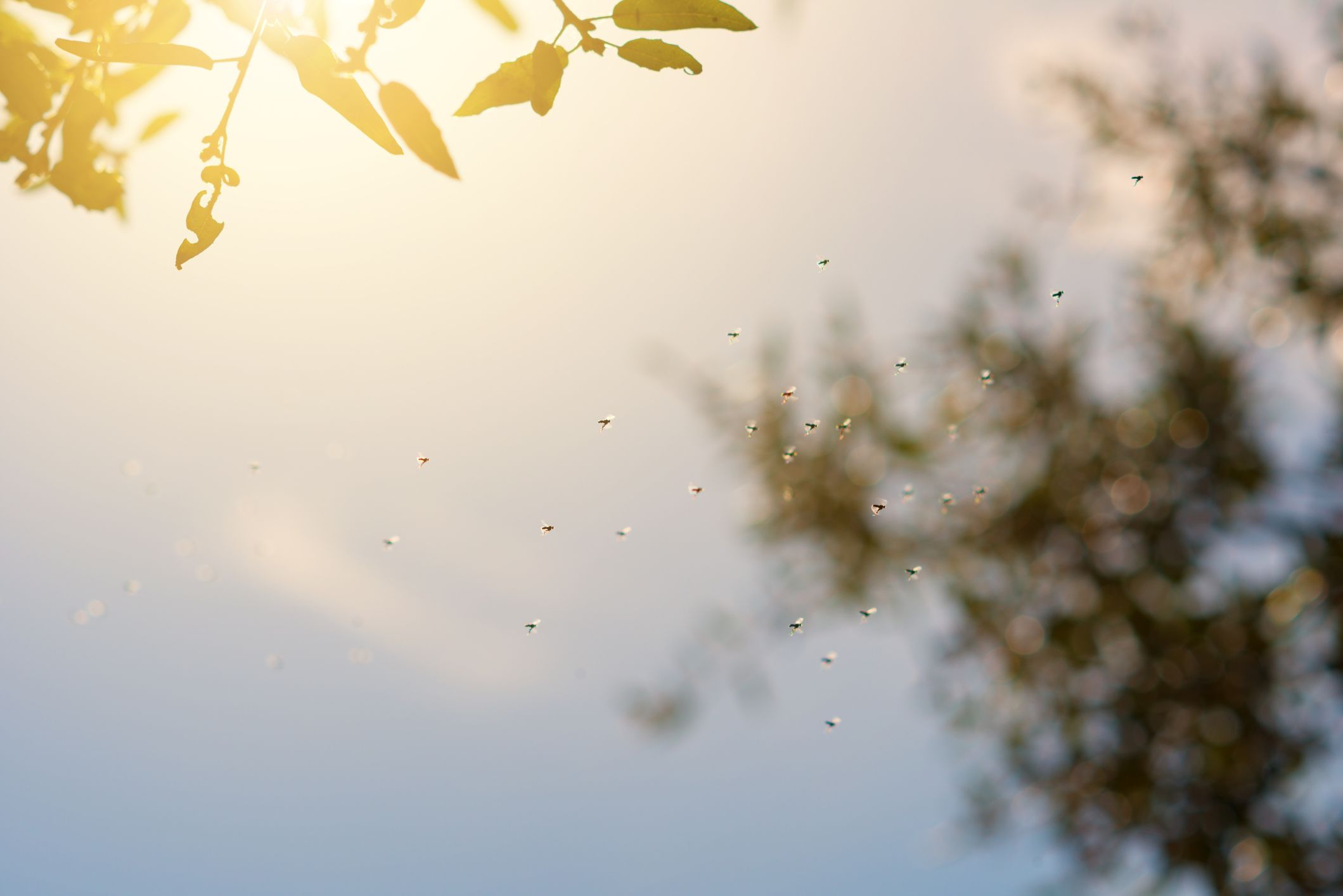
More details about handling bugs with a bite
For more detailed chemical recommendations, refer to the Home and Garden edition of the Georgia Pest Management Handbook.
Selected stinging and biting insect identification and control information was modified from UGA Extension publication “Stinging and Biting Pests.” Access the full publication to learn about other common insects that sting and bite.
News media may republish this story. A text version and art are available for download.
